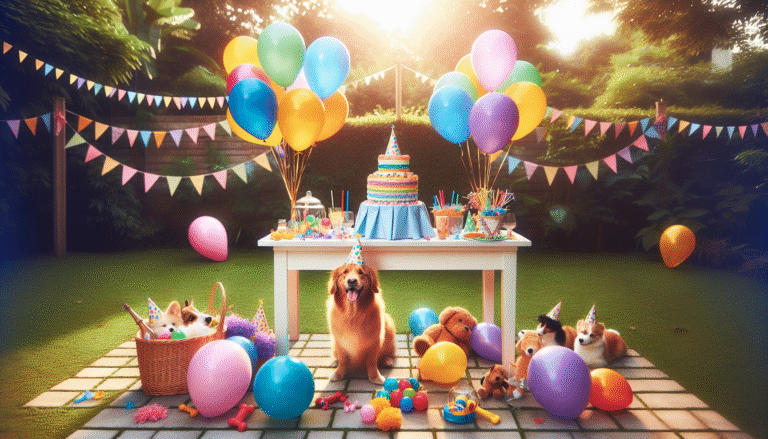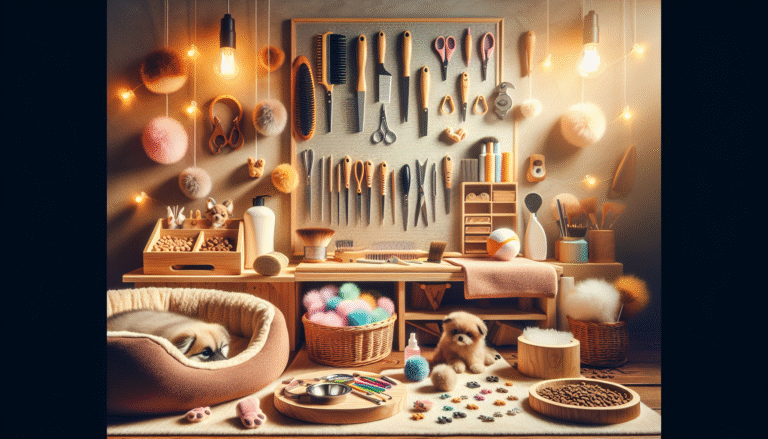What do you think is one of the most overlooked aspects of dog ownership? If you guessed keeping your dog’s food and water bowls clean, you’re probably spot on. Many dog owners don’t realize the importance of bowl hygiene and the potential health risks associated with neglecting this task. Let’s discuss why maintaining clean bowls is crucial for your pet’s health and your own.
The Importance of Bowl Hygiene
You might think that simply filling up your dog’s bowl is enough, but there’s so much more to it. Just like you wouldn’t eat off a dirty plate, your dog shouldn’t have to drink from or eat out of a dirty bowl. Proper bowl hygiene is essential to prevent the buildup of harmful bacteria and ensure your pet enjoys their meals without health risks.
Common Mistakes in Bowl Care
One common mistake many dog owners make is not cleaning their dog’s bowls thoroughly. You may wash them occasionally, but do you do it after each meal? Studies have shown that only about half of dog owners regularly clean their pet’s bowls after every meal, which is what the FDA recommends for optimal hygiene.
Bacteria: A Hidden Danger
The thought of bacteria may bring to mind unpleasant imagery, but it’s a reality when it comes to dog bowls. Bacteria like E. coli, mold, and even salmonella can thrive in unattended bowls, especially if your dog consumes raw food. It’s easy to underestimate the impact of a dirty bowl, but these germs can lead to serious health issues, not only for your dog but also for you.
Health Risks for Dogs
When your dog eats from dirty bowls, they may develop gastrointestinal problems such as vomiting and diarrhea. Skin irritations and infections can also arise due to bacteria that linger in unwashed dishes. Keeping their bowls clean can help ensure they stay healthy and happy.
The Ripple Effect on Human Health
It’s also important to consider the impact of these bacteria on human health. If your dog’s bowls aren’t clean, they can contaminate food preparation areas in your kitchen. Imagine handling your dog’s food bowls and then inadvertently touching surfaces where you prepare your meals. This can lead to cross-contamination that poses risks to you and your family.
How Often Should You Clean the Bowls?
So, how often should you clean your dog’s bowls? The FDA suggests washing them in hot, soapy water after every meal to keep harmful bacteria at bay. This frequency may seem high, but it’s important for protecting both you and your pet.
Daily Cleaning Routine
Implementing a daily routine can make all the difference. If you can, set aside time right after mealtime to wash and dry the bowls. You could create a checklist or a reminder on your phone to help you remember, especially if you’re busy.
Weekly Deep Cleaning
While daily washing is essential, consider doing a more thorough cleaning once a week. This can include sanitizing the bowls in your dishwasher or using a designated bleach solution. Regular deep cleaning helps ensure that no stubborn germs are lurking, giving you peace of mind.
The Best Ways to Clean Dog Bowls
Cleaning dog bowls might seem straightforward, but there are tricks to doing it effectively. The method you choose can impact how well you remove bacteria. Here’s how to guarantee your pet’s dishes are squeaky clean.
Using a Dishwasher
If your dog’s bowls are dishwasher-safe, this method is one of the easiest and most effective. The high temperatures and powerful detergent will help sanitize and clean the bowls exceptionally well. Just ensure that the bowls are placed on the top rack to avoid potential melting or warping.
Hand Washing Techniques
If you’re hand washing, make sure you use hot water and a mild dish soap. Here’s a quick step-by-step guide:
- Rinse: Start by rinsing the bowl with hot water to remove stuck food particles.
- Wash: Apply soap and scrub with a brush or sponge, focusing on hard-to-reach areas.
- Rinse Again: Ensure you rinse thoroughly to remove any soap residue, which can be harmful to your dog.
- Dry: Use a clean towel or air dry for extra hygiene.
Disinfection Methods
Occasionally, it’s recommended to disinfect your dog’s bowls. A simple bleach solution—one part bleach to ten parts water—can be effective. Soak the bowls for a few minutes, then rinse thoroughly with hot water to ensure all bleach is washed away. Don’t forget to wear gloves for your safety!
Reinforcing Good Habits: Area Hygiene
Cleaning the bowls is only part of the battle; the area where your dog eats is equally important. To prevent bacteria from spreading, keep the feeding area tidy.
Daily Cleaning of the Feeding Area
Make it a habit to clean the floor and mat under the bowls every day. Using a disinfectant spray and a cloth can be an effective way to keep this area free from bacteria. A tidy feeding area not only helps with hygiene but also maintains a pleasant environment for you and your pet.
Keeping Food Scoops Sanitary
Another important aspect often overlooked is the hygiene of the food scoop. Using a separate scoop for dog food is wise to avoid contamination from other foods. Make sure to clean this scoop daily, ideally with hot, soapy water, to prevent germs from making their way into your dog’s meals.
Feeding Practices to Maintain Hygiene
Good feeding practices can significantly contribute to proper bowl hygiene. One of the best practices you can adopt is to empty the bowl completely before refilling it.
Avoid Topping Off
It’s tempting to top off your dog’s bowl with fresh food when it’s not completely empty, but this encourages bacteria to thrive. Instead, take the time to completely empty the bowl, wash it, and then fill it with fresh food. This simple practice ensures your dog gets to enjoy clean meals every time!
Storing Dog Food Properly
Proper storage of dog food is also crucial for hygiene. Ensure that your dog food is sealed tightly in a cool, dry place to prevent mold and other bacteria from forming. If you’re using a bulk storage bin, clean it regularly to deter pests and preserve food quality.
The Bigger Picture: Understanding the Why
Cleaning your dog’s food and water bowls goes beyond mere aesthetics; it’s a matter of health and safety. Understanding why these practices are essential can motivate you to stay consistent in maintaining bowl hygiene.
Building a Healthy Relationship
A clean feeding routine fosters a deeper relationship with your dog. When you prioritize their health, you also create a foundation of trust. Dogs thrive on routine, so knowing they can consistently depend on clean meals will enhance their well-being.
The Positive Impact on Behavior
Healthy practices can also lead to better behavior. Dogs who eat from dirty bowls are more likely to develop health issues, leading to irritability and discomfort. Ensuring cleanliness minimizes these outcomes, leading to a happier, well-adjusted pet.
Conclusion
Now that you’re equipped with information about the importance of proper bowl hygiene, why not take action today? The next time you feed your furry companion, take a few extra moments to clean their bowls thoroughly. Remember, maintaining a clean feeding environment protects your dog’s health—ultimately benefiting you, too! By adopting simple cleaning routines and being mindful about feeding practices, you’re investing in a long, happy life for your pet. Your dog deserves it, don’t you think?



